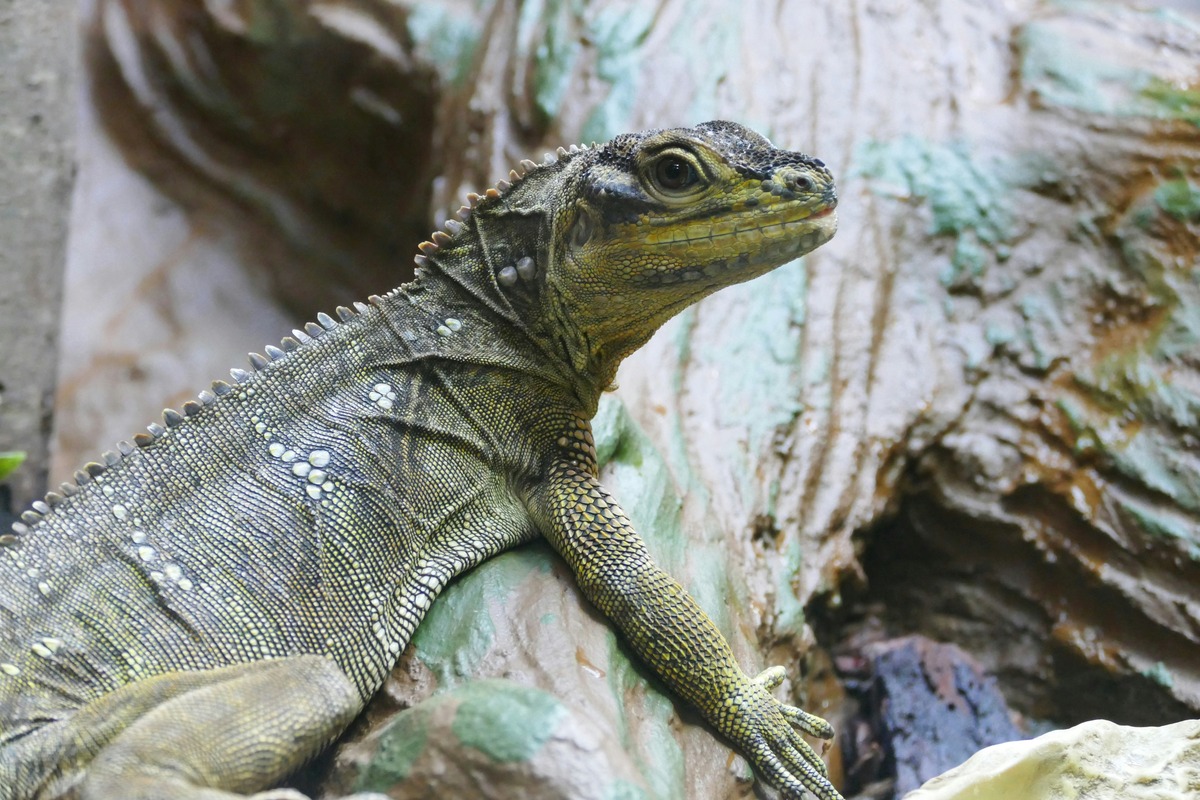

Lifestyle
10 Cool And Easy Exotic Pets To Keep At Home
Published: February 7, 2024
Discover 10 cool and easy exotic pets to keep at home and enhance your lifestyle with these unique companions. Explore the world of exotic pet ownership!
(Many of the links in this article redirect to a specific reviewed product. Your purchase of these products through affiliate links helps to generate commission for Noodls.com, at no extra cost. Learn more)
Table of Contents
Sugar Gliders
Sugar gliders, also known as Petaurus breviceps, are small marsupials native to Australia, Indonesia, and Papua New Guinea. These adorable creatures have gained popularity as exotic pets due to their unique characteristics and endearing personalities.
Characteristics:
-
Appearance: Sugar gliders are tiny, measuring around 5-6 inches in length, with a furry membrane that allows them to glide from one point to another, resembling a miniature flying squirrel. They typically weigh between 3-5 ounces and have large, expressive eyes.
-
Social Behavior: These creatures are highly social and form strong bonds with their owners. They are known for their affectionate nature and enjoy spending time with humans and other gliders.
-
Nocturnal Nature: Sugar gliders are nocturnal animals, meaning they are most active during the night. Their captivating behavior includes gliding, climbing, and exploring their surroundings.
Care and Maintenance:
-
Habitat: To ensure the well-being of sugar gliders, it's essential to provide a spacious cage with plenty of room for climbing and playing. The enclosure should also include branches, ropes, and toys to keep them mentally and physically stimulated.
-
Diet: A balanced diet is crucial for the health of sugar gliders. Their diet primarily consists of fresh fruits, vegetables, protein sources such as mealworms or crickets, and a specialized pellet food to meet their nutritional requirements.
-
Bonding and Interaction: Building a strong bond with sugar gliders requires patience and dedication. Regular interaction, gentle handling, and providing opportunities for playtime outside the cage are vital for fostering a trusting relationship.
Legal Considerations:
Before bringing a sugar glider into your home, it's important to be aware of the legal regulations regarding their ownership. In some regions, owning a sugar glider may require a special permit or license, so it's crucial to research and adhere to local laws and regulations.
Final Thoughts:
Sugar gliders are captivating pets that bring joy and companionship to their owners. Their endearing nature, unique characteristics, and social behavior make them a delightful addition to any household. However, it's essential to approach their care with dedication and responsibility, ensuring they receive the proper environment, nutrition, and social interaction they need to thrive. With the right care and attention, sugar gliders can become cherished members of the family, offering endless entertainment and affection.
Hedgehogs
Hedgehogs, scientifically known as Erinaceinae, are charming and intriguing creatures that have captured the hearts of animal enthusiasts worldwide. These spiky yet endearing mammals are often sought after as exotic pets due to their unique appearance and low-maintenance care requirements.
Characteristics:
-
Distinctive Features: Hedgehogs are characterized by their spiny coat, which serves as a natural defense mechanism against predators. When threatened or agitated, they curl into a tight ball, effectively concealing their vulnerable underside beneath a protective array of quills.
-
Nocturnal Behavior: These captivating creatures are primarily nocturnal, meaning they are most active during the night. Their nocturnal nature adds an element of mystery and intrigue to their behavior, making them fascinating pets to observe during the evening hours.
-
Omnivorous Diet: Hedgehogs are omnivores, consuming a varied diet that includes insects, fruits, vegetables, and high-quality commercial hedgehog food. Their diverse dietary preferences make them relatively easy to feed and cater to in a domestic setting.
Care and Maintenance:
-
Enclosure Setup: Providing a suitable habitat for hedgehogs is essential for their well-being. A spacious enclosure with ample room for exploration and exercise is crucial. Additionally, the enclosure should be escape-proof and equipped with hiding spots, tunnels, and a solid-surfaced wheel for physical activity.
-
Temperature and Lighting: Maintaining an appropriate ambient temperature between 72-80°F (22-27°C) within the hedgehog's environment is vital. Additionally, providing a consistent light-dark cycle to mimic their natural nocturnal behavior is important for their overall well-being.
-
Socialization and Handling: While hedgehogs may initially be shy or cautious, consistent and gentle handling can help them become more comfortable with human interaction over time. Bonding with these pets through regular handling and positive experiences is essential for building trust and a strong human-animal relationship.
Legal Considerations:
Before considering a hedgehog as a pet, it's crucial to research and understand the legal regulations concerning their ownership in your region. Some areas have specific laws or restrictions regarding the possession of hedgehogs as pets, and obtaining the necessary permits or approvals may be required.
Hedgehogs are enchanting and unique companions that can bring joy and fascination to a household. Their captivating traits, low-maintenance care requirements, and distinctive personalities make them an appealing choice for individuals seeking an unconventional yet delightful pet. By providing a suitable environment, a balanced diet, and gentle interaction, hedgehog owners can forge a rewarding bond with these extraordinary creatures, enriching their lives with the presence of a remarkable and endearing companion.
Chinchillas
Chinchillas, scientifically referred to as Chinchilla lanigera, are captivating small mammals native to the Andes mountains of South America. Renowned for their incredibly soft and dense fur, these adorable creatures have become sought-after as exotic pets due to their charming demeanor and unique characteristics.
Characteristics
-
Soft and Luxurious Fur: Chinchillas possess one of the softest and densest fur coats among all land mammals, with approximately 60 hairs growing from a single follicle. This remarkable fur density acts as insulation, helping them thrive in their natural mountainous habitat.
-
Nocturnal Behavior: Chinchillas are primarily nocturnal animals, exhibiting heightened activity during the night. Their nocturnal nature often involves playful behavior, exploration, and social interactions, making them fascinating pets to observe during the evening hours.
-
Dust Bathing: One of the distinctive behaviors of chinchillas is their requirement for dust bathing to maintain proper hygiene. They roll and frolic in specialized volcanic dust, which helps to absorb excess oil and moisture from their fur, keeping it clean and healthy.
Care and Maintenance
-
Habitat and Enclosure: Providing a spacious and secure enclosure is crucial for the well-being of chinchillas. The enclosure should be equipped with platforms, tunnels, and safe chew toys to facilitate their natural behaviors, including jumping, climbing, and gnawing.
-
Diet and Nutrition: A balanced diet is essential for the health of chinchillas. Their diet primarily consists of high-quality hay, supplemented with limited portions of chinchilla pellets, fresh vegetables, and occasional treats such as dried fruits. Access to clean, fresh water should be available at all times.
-
Grooming and Hygiene: Regular dust baths are essential for chinchillas to maintain their fur health. Additionally, providing chew toys and wooden blocks helps to keep their continuously growing teeth worn down, preventing dental issues.
Legal Considerations
Before considering a chinchilla as a pet, it's important to research and understand the legal regulations concerning their ownership in your region. Some areas have specific laws or restrictions regarding the possession of chinchillas as pets, and obtaining the necessary permits or approvals may be required.
Chinchillas are enchanting and delightful pets that can bring joy and fascination to a household. Their unique traits, soft fur, and engaging behaviors make them an appealing choice for individuals seeking an extraordinary companion. By providing a suitable environment, a balanced diet, and opportunities for dust bathing and play, chinchilla owners can forge a rewarding bond with these remarkable creatures, enriching their lives with the presence of an extraordinary and endearing companion.
Read more: How To Keep Dogs Off Couch
Tarantulas
Tarantulas, belonging to the family Theraphosidae, are intriguing arachnids that have captivated enthusiasts and pet owners alike. With their eight legs, prominent fangs, and often imposing size, tarantulas may seem intimidating to some, but they possess a remarkable allure that has made them popular as exotic pets.
Characteristics
-
Diverse Species: The world of tarantulas encompasses a diverse array of species, each with its own unique characteristics and behaviors. From the striking Mexican Redknee tarantula to the elegant Pink Toe tarantula, these creatures exhibit a fascinating range of colors, patterns, and sizes.
-
Low Maintenance: Tarantulas are relatively low-maintenance pets, making them an attractive choice for individuals seeking an exotic companion with minimal care requirements. Their enclosure setup typically includes substrate for burrowing, a water dish, and appropriate hiding places.
-
Fascinating Behaviors: Despite their reputation for being solitary creatures, tarantulas exhibit captivating behaviors such as web-building, burrowing, and hunting. Observing these behaviors offers insight into their natural instincts and adds an element of intrigue to their presence as pets.
Care and Maintenance
-
Habitat: Creating a suitable habitat for tarantulas is essential for their well-being. This includes providing an appropriately sized enclosure with secure ventilation, a substrate that allows for burrowing, and a retreat for privacy.
-
Feeding: Tarantulas are primarily carnivorous, preying on insects such as crickets, roaches, and mealworms. Offering a varied diet of gut-loaded insects helps ensure their nutritional needs are met.
-
Handling: While tarantulas are not typically handled in the same manner as traditional pets, they can still be fascinating to observe. Care should be taken to minimize stress and avoid unnecessary handling, as their primary interaction with humans is centered around feeding and maintenance.
Legal Considerations
Before considering a tarantula as a pet, it's crucial to research and understand the legal regulations concerning their ownership in your region. Some areas have specific laws or restrictions regarding the possession of tarantulas as pets, and obtaining the necessary permits or approvals may be required.
Tarantulas offer a unique and captivating pet-owning experience, appealing to those with an interest in arachnids and exotic creatures. By providing a suitable habitat, a proper diet, and minimal but respectful interaction, tarantula owners can appreciate the mesmerizing presence of these remarkable arachnids, adding a touch of fascination to their lives.
Axolotls
Axolotls, scientifically known as Ambystoma mexicanum, are captivating aquatic creatures that have garnered attention for their unique appearance and fascinating biological traits. Originating from the ancient waterways of Mexico, these amphibians have become increasingly popular as exotic pets, captivating enthusiasts with their endearing features and remarkable regenerative abilities.
Characteristics
-
Aquatic Ambiance: Axolotls are fully aquatic salamanders, possessing gills that allow them to respire underwater throughout their entire lives. Their sleek bodies, feathery external gills, and perpetually smiling expressions make them a visually striking addition to any aquatic habitat.
-
Regenerative Prowess: One of the most remarkable traits of axolotls is their exceptional regenerative capabilities. These amphibians have the extraordinary ability to regrow lost limbs, tails, and even parts of their brain and spinal cord, a feature that has captured the interest of researchers and scientists worldwide.
-
Varied Coloration: Axolotls exhibit a diverse range of colors, including shades of albino, melanoid, wild type, and various combinations of pigmentation. Their captivating hues and patterns make them a visually appealing and sought-after species among pet enthusiasts.
Care and Maintenance
-
Aquatic Habitat: Providing a suitable aquatic environment is essential for the well-being of axolotls. A spacious tank with a secure lid, clean and filtered water, and ample space for swimming and exploring is crucial. Additionally, incorporating live or artificial plants and suitable hiding spots enriches their habitat.
-
Water Quality: Maintaining pristine water conditions is paramount for axolotl health. Regular water testing, filtration, and partial water changes help ensure optimal water quality, minimizing the risk of stress and potential health issues.
-
Feeding Regimen: Axolotls are carnivorous and primarily feed on live or frozen foods such as bloodworms, brine shrimp, and earthworms. Providing a varied diet rich in protein is essential for their nutritional needs and overall health.
Legal Considerations
Before acquiring an axolotl as a pet, it's crucial to research and understand the legal regulations concerning their ownership in your region. Some areas have specific laws or restrictions regarding the possession of axolotls as pets, and obtaining the necessary permits or approvals may be required.
Axolotls are captivating and unique aquatic companions that can bring a touch of wonder and fascination to a home environment. By providing a suitable aquatic habitat, maintaining pristine water conditions, and offering a nutritious diet, axolotl owners can appreciate the extraordinary presence of these remarkable amphibians, adding a touch of aquatic charm to their lives.
Read more: 10 Homemade Remedies To Keep Bees Away
Bearded Dragons
Bearded dragons, scientifically referred to as Pogona, are captivating reptiles that have gained immense popularity as exotic pets. Originating from the arid woodlands and deserts of Australia, these remarkable creatures have captured the hearts of reptile enthusiasts worldwide. Their unique appearance, docile nature, and relatively low maintenance requirements make them an appealing choice for individuals seeking a fascinating and interactive reptilian companion.
Characteristics
Bearded dragons are characterized by their distinct appearance and engaging behaviors, making them a delightful addition to any reptile enthusiast's collection. Some key characteristics include:
-
Distinctive Beard Display: One of the most striking features of bearded dragons is their ability to puff out a throat pouch, creating the appearance of a "beard" when they feel threatened or display dominance. This fascinating behavior adds an element of intrigue to their interactions and serves as a natural defense mechanism.
-
Varied Coloration: Bearded dragons exhibit a diverse range of colors and patterns, including shades of tan, yellow, orange, and even hints of red and blue. Their vibrant hues and unique markings make each individual dragon a visually captivating and distinctive pet.
-
Docile Temperament: Known for their gentle and sociable nature, bearded dragons are often sought after for their calm demeanor and willingness to interact with their human caregivers. Their friendly disposition and curious behaviors make them ideal pets for both novice and experienced reptile enthusiasts.
Care and Maintenance
Providing optimal care for bearded dragons is essential for their well-being and overall health. Some key aspects of their care include:
-
Habitat Setup: Creating a suitable habitat for bearded dragons involves providing a spacious enclosure with appropriate substrate, basking spots, hiding areas, and climbing structures. The enclosure should also be equipped with UVB lighting to support their calcium metabolism and overall physiological well-being.
-
Nutritious Diet: Bearded dragons require a varied diet consisting of leafy greens, vegetables, fruits, and appropriately sized insects. Ensuring a balanced and nutritionally rich diet is crucial for their growth, vitality, and long-term health.
-
Temperature and Humidity Control: Maintaining the correct temperature gradients and humidity levels within the dragon's habitat is vital. This includes providing a basking area with a temperature range of 95-105°F (35-40°C) and a cooler zone around 75-85°F (24-29°C) to allow for thermoregulation.
Legal Considerations
Before welcoming a bearded dragon into your home, it's important to research and understand the legal regulations concerning their ownership in your region. Some areas have specific laws or restrictions regarding the possession of bearded dragons as pets, and obtaining the necessary permits or approvals may be required.
Bearded dragons are captivating and interactive reptilian companions that can bring joy and fascination to a household. By providing a suitable habitat, a balanced diet, and opportunities for interaction and enrichment, bearded dragon owners can appreciate the remarkable presence of these extraordinary reptiles, adding a touch of reptilian charm to their lives.
Read more: 10 Most Beautiful And Exotic Domestic Cat Breeds – Prepare To Be Amazed! [Pictures Included]
Leopard Geckos
Leopard geckos, scientifically known as Eublepharis macularius, are captivating reptiles that have gained widespread popularity as beloved pets among reptile enthusiasts. Originating from the arid regions of Afghanistan, Pakistan, and northwestern India, these remarkable creatures have become sought-after for their unique appearance, gentle demeanor, and relatively low maintenance requirements.
Characteristics
Leopard geckos are distinguished by their striking physical features and captivating behaviors, making them an intriguing addition to any reptile enthusiast's collection. Some key characteristics include:
-
Distinctive Appearance: Leopard geckos boast a mesmerizing array of colors and patterns, including variations of yellow, white, and brown, adorned with characteristic spots or "leopard-like" markings. Their captivating appearance adds a touch of visual allure to their presence as pets.
-
Nocturnal Nature: These reptiles are primarily nocturnal, displaying heightened activity during the night. Their nocturnal behavior includes exploring their habitat, hunting for prey, and engaging in intriguing behaviors such as tail wagging and vocalizations.
-
Docile Temperament: Known for their gentle and docile nature, leopard geckos are often favored for their calm disposition and ease of handling. Their amiable demeanor and willingness to interact make them an ideal choice for reptile enthusiasts of all experience levels.
Care and Maintenance
Ensuring optimal care for leopard geckos is essential for their well-being and overall health. Key aspects of their care include:
-
Habitat Setup: Creating a suitable habitat for leopard geckos involves providing a spacious enclosure with appropriate substrate, hiding spots, climbing structures, and a temperature gradient that allows for thermoregulation. Additionally, providing a suitable hide box is crucial for offering a secure retreat for these nocturnal creatures.
-
Nutritious Diet: Leopard geckos thrive on a diet consisting of live insects such as crickets, mealworms, and dubia roaches, supplemented with occasional treats like waxworms. It's essential to provide gut-loaded insects and dust them with calcium and vitamin supplements to ensure their nutritional needs are met.
-
Temperature and Lighting: Maintaining the correct temperature and lighting within the gecko's habitat is vital for their physiological well-being. This includes providing a warm basking spot ranging from 88-90°F (31-32°C) and a cooler zone around 75-80°F (24-27°C), as well as UVB lighting to support their calcium metabolism.
Legal Considerations
Before welcoming a leopard gecko into your home, it's important to research and understand the legal regulations concerning their ownership in your region. Some areas may have specific laws or restrictions regarding the possession of leopard geckos as pets, and obtaining the necessary permits or approvals may be required.
Leopard geckos are captivating and endearing reptilian companions that can bring joy and fascination to a household. By providing a suitable habitat, a balanced diet, and opportunities for interaction and enrichment, leopard gecko owners can appreciate the remarkable presence of these extraordinary reptiles, adding a touch of reptilian charm to their lives.
Read more: How To Be Cool
Hermit Crabs
Hermit crabs, belonging to the superfamily Paguroidea, are captivating crustaceans that have become popular as unique and intriguing pets. Originating from various coastal regions around the world, these remarkable creatures have captivated the interest of pet enthusiasts with their fascinating behaviors and endearing characteristics.
Characteristics
Hermit crabs possess a distinctive set of traits and behaviors that make them a fascinating addition to the world of exotic pets:
-
Shell Dependency: One of the most notable features of hermit crabs is their reliance on empty gastropod shells for protection. As they grow, hermit crabs seek out larger shells to accommodate their increasing size, showcasing a captivating display of shell-changing behavior.
-
Social Nature: Hermit crabs are known for their social tendencies and are often observed in groups in their natural habitats. Their interactions with one another, including shell swapping and cooperative foraging, highlight their intriguing social dynamics.
-
Varied Species: The world of hermit crabs encompasses a diverse array of species, each displaying unique colors, patterns, and shell preferences. From the captivating Purple Pincher hermit crab to the striking Ecuadorian hermit crab, these creatures offer a visually captivating spectrum of diversity.
Care and Maintenance
Providing optimal care for hermit crabs is essential for their well-being and overall health. Key aspects of their care include:
-
Habitat Setup: Creating a suitable habitat for hermit crabs involves providing a spacious enclosure with appropriate substrate, climbing structures, and a variety of shell options. Maintaining proper humidity levels and access to both land and water areas is crucial for their physiological health.
-
Nutritious Diet: Hermit crabs thrive on a diet consisting of a variety of foods such as fresh fruits, vegetables, protein sources, and specialized commercial hermit crab food. Calcium supplements and access to clean water are essential for their nutritional requirements.
-
Temperature and Humidity Control: Maintaining the correct temperature and humidity levels within the crab's habitat is vital. This includes providing a warm environment with a temperature range of 75-85°F (24-29°C) and ensuring adequate humidity to support their respiratory functions and shell health.
Legal Considerations
Before considering hermit crabs as pets, it's important to research and understand the legal regulations concerning their ownership in your region. Some areas may have specific laws or restrictions regarding the possession of hermit crabs as pets, and obtaining the necessary permits or approvals may be required.
Hermit crabs are captivating and unique aquatic companions that can bring a touch of wonder and fascination to a home environment. By providing a suitable habitat, a balanced diet, and opportunities for interaction and enrichment, hermit crab owners can appreciate the extraordinary presence of these remarkable crustaceans, adding a touch of aquatic charm to their lives.
Parrots
Parrots, belonging to the order Psittaciformes, are captivating and intelligent birds that have captivated the hearts of bird enthusiasts and pet owners worldwide. Renowned for their striking plumage, impressive vocal abilities, and engaging personalities, parrots have established themselves as cherished companions in countless households. Their remarkable traits and endearing behaviors make them a popular choice for individuals seeking an extraordinary avian pet.
Characteristics
Parrots exhibit a diverse range of characteristics that contribute to their appeal as pets. From the vibrant hues of macaws to the charming antics of cockatoos, each species offers a unique set of traits that make them captivating companions. Some key characteristics of parrots include:
-
Colorful Plumage: Parrots are renowned for their vibrant and diverse plumage, with a mesmerizing array of colors and patterns that vary across different species. From the brilliant reds and blues of the Scarlet Macaw to the iridescent greens of the Eclectus Parrot, their visual allure adds a touch of splendor to any environment.
-
Vocal Mimicry: One of the most remarkable attributes of parrots is their exceptional vocal abilities. Many species have the capacity for vocal mimicry, allowing them to imitate human speech, environmental sounds, and even musical tunes. This captivating trait showcases their intelligence and adds a delightful element of interaction to their presence as pets.
-
Social Interaction: Parrots are inherently social creatures, often forming strong bonds with their human caregivers. Their affectionate nature and desire for social interaction make them engaging and responsive companions, fostering a sense of companionship and mutual enrichment.
Care and Maintenance
Providing optimal care for parrots is essential to ensure their well-being and overall quality of life. Key aspects of their care include:
-
Spacious Enclosure: Creating a suitable habitat for parrots involves providing a spacious and enriching enclosure that allows for ample room to perch, fly (for larger species), and engage in natural behaviors. The enclosure should also be equipped with toys, perches, and mental stimulation to promote their physical and psychological well-being.
-
Nutritious Diet: Parrots thrive on a varied and balanced diet consisting of high-quality pellets, fresh fruits, vegetables, and occasional treats. Ensuring a nutritionally rich diet supports their vitality, immune function, and overall health.
-
Social Interaction: Regular interaction and mental stimulation are crucial for the well-being of parrots. Engaging in activities such as training, playtime, and positive reinforcement strengthens the bond between parrots and their human companions, fostering a harmonious and enriching relationship.
Legal Considerations
Before welcoming a parrot into your home, it's important to research and understand the legal regulations concerning their ownership in your region. Some areas have specific laws or restrictions regarding the possession of parrots as pets, and obtaining the necessary permits or approvals may be required.
Parrots are captivating and extraordinary avian companions that can bring joy, vibrancy, and companionship to a household. By providing a suitable habitat, a balanced diet, and opportunities for interaction and enrichment, parrot owners can appreciate the remarkable presence of these intelligent and endearing birds, adding a touch of avian charm to their lives.
Pythons
Pythons, belonging to the family Pythonidae, are captivating and powerful constrictor snakes that have garnered fascination and intrigue among reptile enthusiasts. With their impressive size, striking patterns, and enigmatic presence, pythons have become sought-after as exotic pets, captivating individuals with their unique characteristics and awe-inspiring allure.
Characteristics
Pythons exhibit a remarkable set of traits and behaviors that contribute to their appeal as exotic pets. From their imposing size and muscular build to their mesmerizing patterns and fascinating hunting techniques, these creatures possess a captivating array of characteristics. Some key attributes of pythons include:
-
Impressive Size: Pythons are among the largest snakes in the world, with certain species, such as the reticulated python, capable of reaching lengths exceeding 20 feet. Their substantial size commands attention and adds a sense of awe to their presence as pets.
-
Constricting Abilities: One of the most remarkable traits of pythons is their constricting prowess. These snakes utilize their powerful bodies to coil around prey, exerting immense pressure and effectively suffocating their target before consuming it whole. This natural behavior showcases their predatory instincts and adds an element of intrigue to their captivating nature.
-
Varied Species: The world of pythons encompasses a diverse range of species, each exhibiting unique coloration, patterns, and behaviors. From the iconic ball python with its gentle disposition to the formidable Burmese python, the diversity within the python family offers a captivating spectrum of options for reptile enthusiasts.
Care and Maintenance
Providing optimal care for pythons is essential to ensure their well-being and overall health. Key aspects of their care include:
-
Habitat Setup: Creating a suitable enclosure for pythons involves providing a spacious and secure habitat with appropriate substrate, hiding spots, and climbing structures. Maintaining optimal temperature gradients and humidity levels is crucial to mimic their natural environment and support their physiological needs.
-
Nutrition and Feeding: Pythons are carnivorous and require a diet consisting of appropriately sized prey items. Feeding schedules, prey selection, and monitoring feeding behavior are essential aspects of their care to ensure they receive the necessary nutrition and maintain a healthy body condition.
-
Handling and Enrichment: While pythons may not exhibit the same level of interactive behavior as some other pets, providing mental stimulation through environmental enrichment and gentle, consistent handling can contribute to their overall well-being and acclimation to human interaction.
Legal Considerations
Before considering a python as a pet, it's important to research and understand the legal regulations concerning their ownership in your region. Some areas have specific laws or restrictions regarding the possession of pythons as pets, and obtaining the necessary permits or approvals may be required.
Pythons are captivating and extraordinary reptilian companions that can bring a touch of wonder and fascination to a household. By providing a suitable habitat, a balanced diet, and opportunities for enrichment, python owners can appreciate the remarkable presence of these majestic and enigmatic snakes, adding a touch of reptilian allure to their lives.






